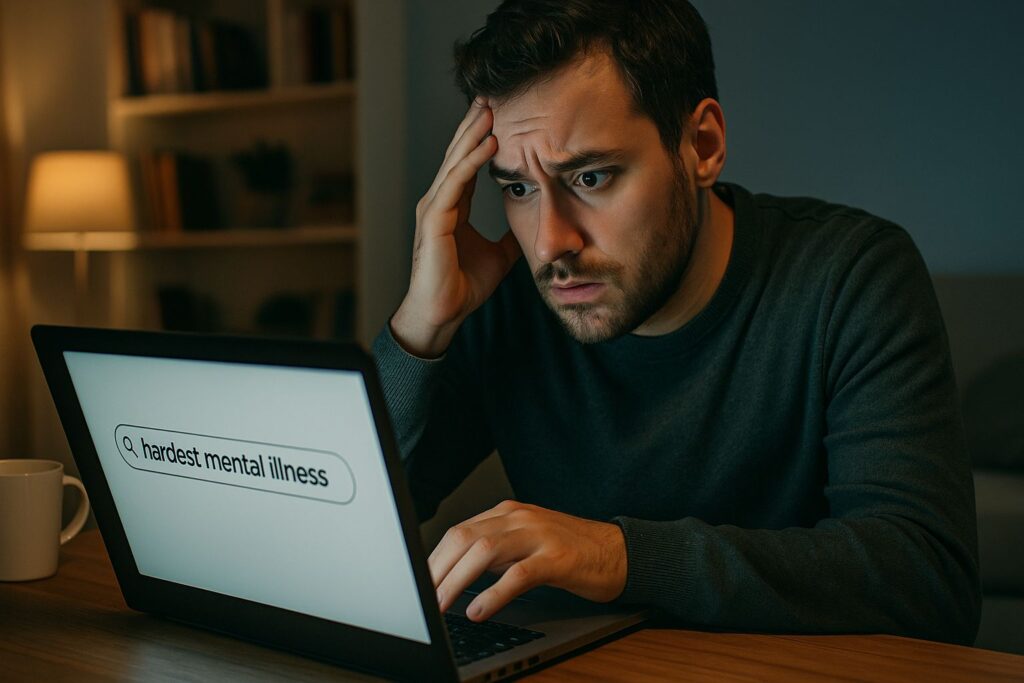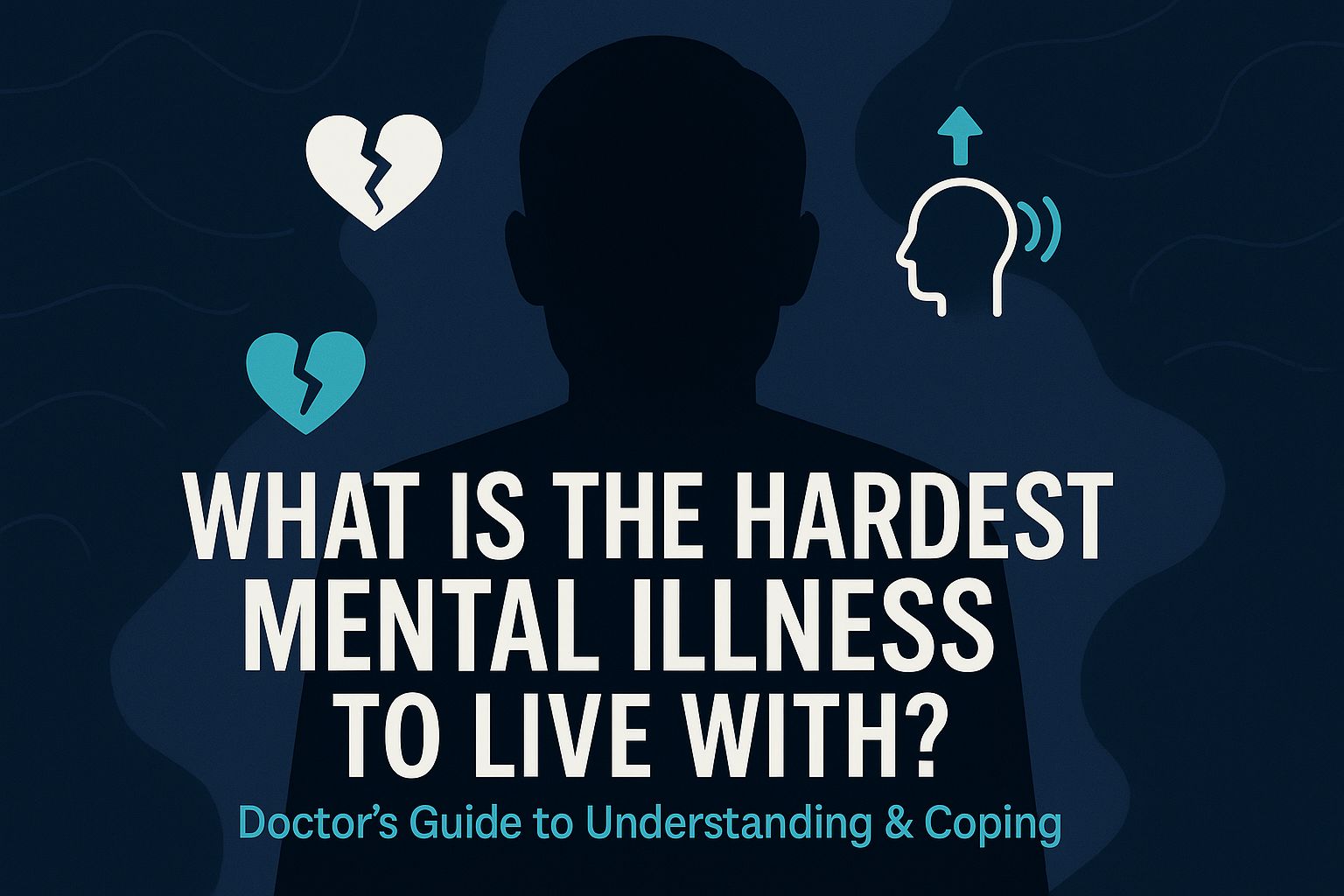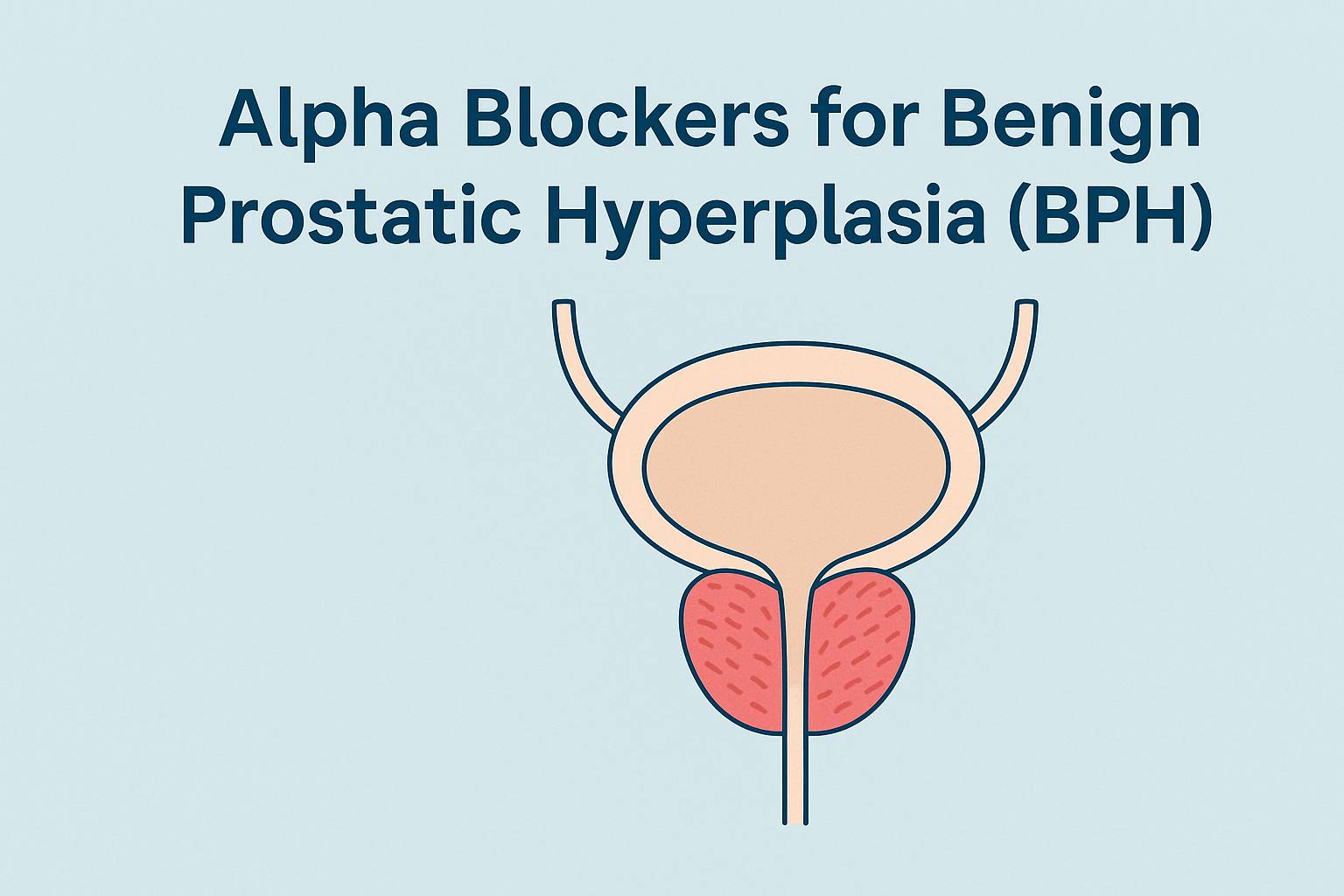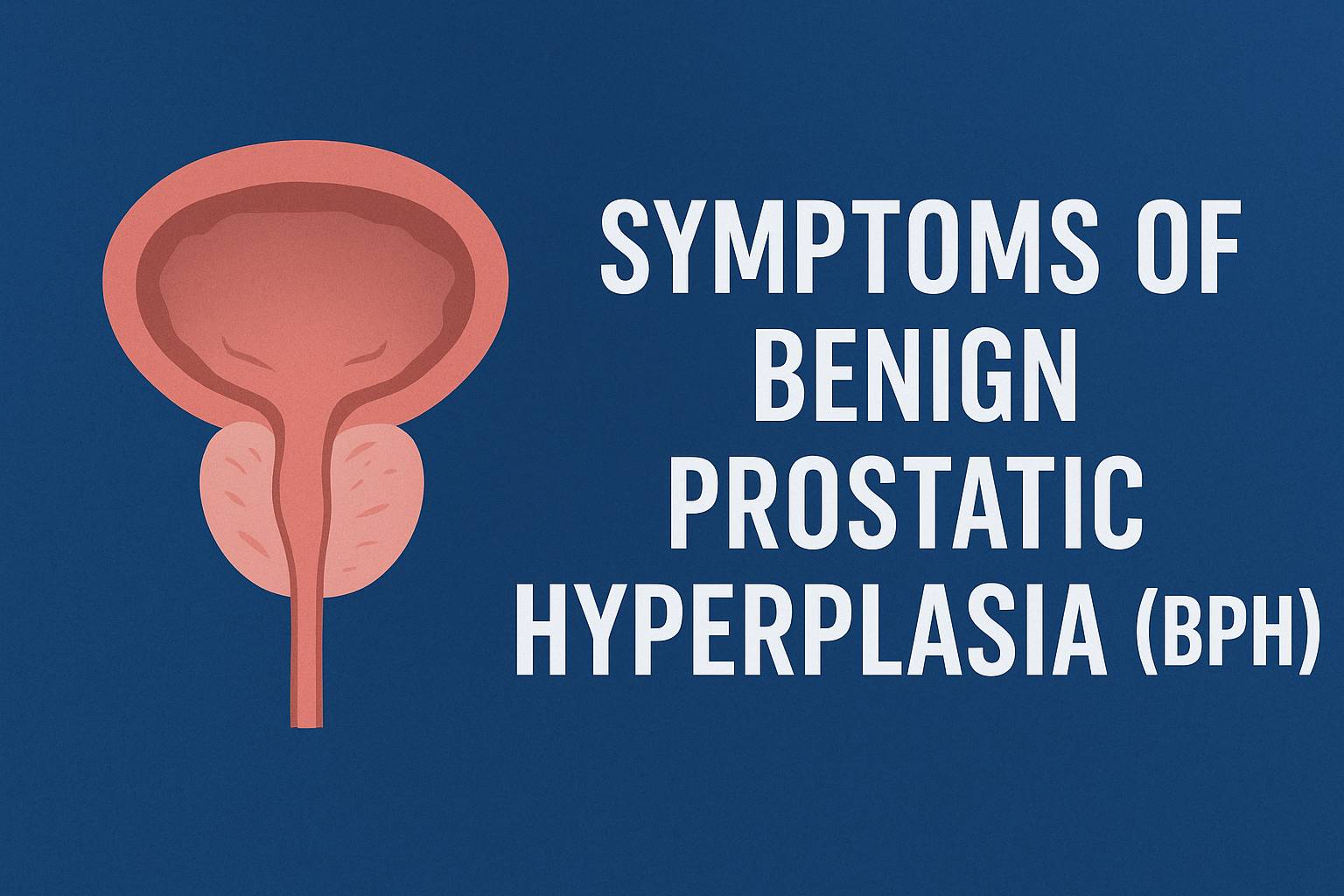What Is the Hardest Mental Illness to Live With?
Why People Wonder About the “Hardest” Mental Disorder
Many people turn to the internet with questions about the most severe mental health conditions. Behind this search is often a mix of fear, curiosity, and a desire for clarity. Before looking at specific concerns, it is important to understand why this question arises so often in the first place.

Common fears behind the question
When people search for “what is the hardest mental illness to live with,” it usually comes from a place of worry rather than simple curiosity. Often, someone has noticed changes in their own thoughts or behaviors, or they are concerned about a family member. The question becomes a way to understand whether the situation could represent the most severe kind of psychiatric problem.
In my own practice, I often meet patients who arrive already convinced they might have the “worst” disorder. This fear is natural, but it tends to increase distress. Looking for answers is often less about labels and more about trying to find some sense of control when life feels unpredictable.
How this search reflects real patient concerns
Asking about the “hardest disorder” really reflects deeper worries. People want to know how much their daily life could change, whether recovery is possible, and how much support they will need. Patients often ask if they will still be able to work, care for their children, or maintain their relationships. These are not abstract questions — they touch directly on independence and identity.
From a physician’s perspective, I see this search as a call for clarity and reassurance. It shows that people are not only afraid of the name of a condition, but also of the reality of living with it: the treatments, the challenges, and the future. By addressing those concerns openly, we can replace fear with a clearer understanding and a plan forward.
The Hardest Psychiatric Conditions to Live With
Severe mental health disorders affect people in very different ways, but a few stand out because of how deeply they interfere with daily life. Doctors often describe conditions such as schizophrenia, bipolar disorder, and major depression as especially challenging. Understanding why helps reduce fear and sets realistic expectations about treatment and recovery.
Schizophrenia and its daily impact
Schizophrenia is one of the most disabling psychiatric conditions. It can cause hallucinations, delusions, and disorganized thinking. These symptoms often make it difficult for someone to hold a job, manage relationships, or even trust their own senses.

In my practice, I have seen how schizophrenia can disrupt everyday routines. Something as simple as grocery shopping can feel overwhelming if voices are distracting or reality feels distorted. At the same time, treatment with modern antipsychotic medications and therapy can greatly improve stability, which is why early diagnosis is so important.
Severe bipolar disorder and mood instability
Bipolar disorder is marked by dramatic shifts between manic highs and depressive lows. During a manic phase, a person may feel full of energy, take financial risks, or sleep very little. When the cycle turns into depression, the same individual may struggle to get out of bed or feel hopeless about the future.
For families, these mood swings can be extremely stressful. Patients often describe the unpredictability of bipolar episodes as the hardest part — never knowing when the next shift will come. With proper treatment, which often combines medication with structured therapy, many people can regain balance and live fulfilling lives, though managing the illness requires ongoing care.
Major depression and loss of function
Major depressive disorder is one of the most common but also one of the most disabling psychiatric conditions. It goes far beyond ordinary sadness. People may lose interest in activities they once enjoyed, experience extreme fatigue, or feel unable to perform basic daily tasks. Sleep and appetite often change, and thoughts of hopelessness can become overwhelming.
In my own experience, patients with severe depression often describe life as if “moving through thick fog.” Even simple responsibilities like answering a phone call or preparing a meal can feel impossible. This level of functional loss is why depression is considered one of the hardest mental health problems to live with, despite being treatable with therapy and medication.
Comparing different disorders in severity
Each severe psychiatric condition presents unique challenges. Schizophrenia can distort reality itself, bipolar disorder destabilizes mood and judgment, and major depression drains motivation and energy. While every individual’s experience is different, comparing them side by side helps illustrate why these illnesses are often described as the most difficult to manage.
| Disorder | Key Symptoms | Daily Impact | Prognosis with Treatment |
|---|---|---|---|
| Schizophrenia | Hallucinations, delusions, disorganized thinking | Difficulty maintaining work, relationships, self-care | Often improves with long-term medication + therapy |
| Bipolar disorder | Mood swings between mania and depression | Risky behaviors during mania, loss of function in depression | Can stabilize with mood stabilizers + structured care |
| Major depression | Persistent sadness, loss of interest, fatigue | Struggles with basic tasks, impaired social life | Good response to therapy and antidepressants in many cases |
The Most Painful Mental Health Problems
Not every psychiatric condition is equally disabling, but some are described as especially painful because of the constant emotional suffering they bring. These problems may not always stop a person from going to work or maintaining daily routines, but they can make life feel unbearable on the inside.
Emotional suffering vs functional disability
When doctors talk about the “hardest” conditions, they often refer to those that limit independence — for example, schizophrenia or severe depression. But the “most painful” mental health issues are defined more by how much emotional distress they create.
Obsessive-compulsive disorder (OCD) is a good example. A person may still hold a job or attend school, yet spend hours battling unwanted thoughts or rituals. The impact is less about losing basic function and more about the constant torment inside the mind. In this sense, “painful” and “hardest” are not always the same thing.
OCD and the burden of intrusive thoughts
OCD is one of the clearest examples of mental suffering that feels unbearable. Patients describe repetitive, unwanted thoughts that they cannot switch off, no matter how hard they try. To relieve the anxiety, they may develop rituals such as repeated handwashing, checking locks, or counting.

In my practice, I have met people whose daily lives looked “normal” from the outside, yet they were silently trapped in hours of compulsions each day. The burden of these intrusive thoughts often makes OCD feel like one of the most painful mental disorders to live with, even if it does not always cause the same functional loss as conditions like schizophrenia.
Severe depression and suicidal ideation
Major depression is not only disabling — for many people it is also profoundly painful. Beyond fatigue and loss of interest, some patients develop persistent thoughts about death or suicide. These thoughts can become so overwhelming that the illness feels unbearable, even when outward function is partly preserved.
In my own clinical work, I have spoken with patients who described waking up each morning already exhausted by the idea of surviving another day. This level of despair explains why depression carries such a high risk of self-harm and why doctors view it as one of the most urgent psychiatric conditions to treat. Immediate professional help is vital whenever suicidal thoughts appear.
Why “painful” feels different for each person
Pain in mental health is deeply personal. Two people with the same diagnosis may experience it in completely different ways. For one, the illness may mostly limit daily activities, while for another it may bring constant inner torment. Cultural beliefs, social support, and even personality traits influence how much suffering a disorder creates.
This is why defining the “most painful mental illness” is never straightforward. What feels unbearable to one person may be more manageable to another. As physicians, we focus less on ranking conditions and more on understanding each patient’s individual experience — and then tailoring treatment to ease both suffering and disability.
What Does the Bible Say About Mental Health?
Questions about faith often arise when people talk about psychiatric conditions. For many, spiritual guidance is as important as medical advice. The Bible does not use modern terms such as “mental illness,” but it does contain passages that believers interpret as speaking to emotional suffering and healing.

Historical and spiritual context
In ancient times, unusual behavior was often explained through spiritual or moral struggles rather than medical science. People in biblical narratives who showed signs of distress were sometimes described as being “troubled in spirit.” While these accounts reflect the understanding of the time, they also highlight that human beings have always wrestled with mental and emotional challenges.
Passages emphasizing compassion and healing
Several biblical passages stress kindness and support for those in distress. For example, verses encourage bearing one another’s burdens and showing compassion to the suffering. Believers often find comfort in the idea that their pain is seen and that hope and restoration are possible. This perspective can provide emotional strength during difficult times, even while medical care addresses the biological aspects of a condition.
Modern interpretation vs medical perspective
Today, most faith communities recognize that psychiatric conditions are genuine health issues, not signs of weakness or punishment. Many religious leaders encourage members to seek professional treatment while also drawing strength from prayer, community, and scripture.
As a physician, I often remind patients that spirituality and medicine do not have to be in conflict. For some, faith provides motivation and resilience. For others, therapy and medication are the main pillars of recovery. Ideally, both can work together, offering comfort for the soul and science for the body.
Why Defining the “Worst” Disorder Is Difficult
When people ask about the “worst” psychiatric condition, they often expect a clear ranking. In reality, mental health problems affect each person differently, which makes such comparisons difficult and sometimes misleading.
Differences in symptoms across patients
The same diagnosis can look completely different from one patient to another. For example, two people with bipolar disorder may live very different lives: one might experience occasional mood swings that respond well to treatment, while another may face repeated hospitalizations due to severe episodes.
In my practice, I have seen patients with schizophrenia who, with steady treatment, were able to work and maintain relationships, while others struggled with daily functioning despite similar medical care. These differences remind us that psychiatric conditions are not defined only by their label, but also by how symptoms appear in each individual’s life.
Because of this variation, calling one disorder the “worst” oversimplifies reality. What matters more is how the illness affects a particular person and what resources are available to help them cope and recover.
Cultural and personal factors
The way a psychiatric condition is experienced often depends on cultural background and personal outlook. In some communities, mental health struggles are openly discussed, while in others they remain hidden due to stigma. This difference can make the same disorder feel much heavier for one person than for another.
Personality traits also play a role. Someone with strong coping skills or resilience may find ways to adapt, while another person with the same diagnosis might feel overwhelmed. In my own clinical work, I have seen how cultural expectations and personal identity shape whether an illness is seen as manageable or unbearable.
The role of support systems and treatment access
Another key factor is whether people have access to effective treatment and social support. A person with schizophrenia who has family support, affordable medication, and regular follow-up may live a stable and meaningful life. In contrast, someone without these resources can experience severe disability from the same condition.
Support systems — from close relatives to community programs — can dramatically change the course of any mental health problem. In practice, this means that no disorder is universally the “worst.” The burden depends not only on biology, but also on the environment and the care available.
Coping Strategies and Treatment Options
Even when a psychiatric condition feels overwhelming, treatment can make life more stable and meaningful. Care usually combines therapy, medication, and lifestyle support — no single method works for everyone. The right plan is built step by step, tailored to each patient’s needs.
Psychotherapy approaches (CBT, DBT, psychoeducation)
Talking therapies give patients practical tools to manage symptoms. Cognitive behavioral therapy (CBT) helps people recognize negative thought patterns and replace them with healthier ones. Dialectical behavior therapy (DBT) focuses on emotional regulation and coping with stress. Psychoeducation involves teaching both patients and families about the nature of the illness and how to respond to early warning signs.
In my practice, I have seen how therapy can restore a sense of control. One patient with bipolar disorder explained that learning to spot the earliest signs of mania gave them the confidence to seek help before a full episode developed. This kind of skill-building is what makes therapy such a valuable part of recovery.
Medications for severe conditions
Medication remains a cornerstone of treatment for illnesses like schizophrenia, bipolar disorder, and major depression. Antipsychotics can reduce hallucinations, mood stabilizers help prevent manic swings, and antidepressants can ease persistent sadness.
Patients often worry about side effects or the idea of taking medication long term. These concerns are valid, but modern psychiatric drugs are generally safer and more precise than in the past. With close medical supervision, most people achieve a balance where benefits — such as improved sleep, clearer thinking, and emotional stability — outweigh the risks.
Lifestyle and family support
Beyond therapy and medication, everyday habits and strong support networks play a central role in recovery. Regular sleep, balanced nutrition, physical activity, and avoiding substances like alcohol or drugs can all reduce symptom flare-ups.
Family involvement is equally important. In my practice, patients who had relatives attending psychoeducation sessions often showed better outcomes. When families understand the condition, they provide encouragement rather than judgment, which helps patients feel less isolated.
Long-term prognosis and recovery stories
Living with a severe psychiatric condition is challenging, but recovery is possible. Many people with schizophrenia, bipolar disorder, or major depression learn to manage their symptoms and rebuild meaningful lives. Success stories include returning to work, forming relationships, or pursuing education after years of struggle.
It is important to stress that recovery rarely means the complete absence of symptoms. Instead, it is about finding stability, purpose, and resilience. Sharing these positive outcomes helps reduce stigma and gives hope to those currently facing severe mental health problems.

| Approach | How it helps | Examples |
|---|---|---|
| Cognitive Behavioral Therapy (CBT) | Restructures negative thought patterns | Identifying triggers, reframing thoughts |
| Dialectical Behavior Therapy (DBT) | Improves emotional regulation | Mindfulness, stress tolerance skills |
| Psychoeducation | Increases knowledge and family involvement | Learning early warning signs, relapse prevention |
| Medication | Reduces symptom intensity, stabilizes mood | Antipsychotics, mood stabilizers, antidepressants |
| Lifestyle changes | Supports overall health and reduces relapses | Regular sleep, exercise, nutrition |
| Family support | Provides emotional stability and encouragement | Attending therapy sessions together |
When to See a Doctor
Severe mental health conditions can sometimes reach a point where waiting is no longer safe. Knowing the warning signs helps people act early and get the support they need.
Warning signs you shouldn’t ignore
There are several red flags that signal it is time to seek professional help without delay. These include:
- Persistent suicidal thoughts or talking about wanting to die.
- Losing touch with reality, such as hearing voices or holding strong delusional beliefs.
- Severe mood swings that interfere with daily responsibilities.
- Inability to care for basic needs like eating, bathing, or managing money.
- Rapid decline in functioning, for example, sudden job loss or social withdrawal.
In my practice, I often remind patients and families that seeking help is not a sign of weakness. Reaching out to a doctor or mental health professional can be lifesaving. The earlier treatment begins, the better the chances of recovery and long-term stability.
How early diagnosis improves outcomes
The earlier a psychiatric condition is recognized, the more effective treatment can be. Early diagnosis allows doctors to start therapy before symptoms become deeply entrenched. For example, beginning medication at the first signs of schizophrenia can significantly reduce the risk of long-term disability.
In my practice, I have seen patients who sought help early return to work or school much faster than those who delayed treatment. Timely intervention also helps families prepare and build supportive routines, which improves stability in the long run.
Talking to loved ones about seeking help
Convincing someone to see a doctor can be difficult, especially if they feel ashamed or deny there is a problem. Approaching the conversation with empathy makes a difference. Instead of saying, “You need treatment,” it can be more effective to express concern: “I’ve noticed you’re struggling, and I care about you.”
Families often worry about saying the wrong thing. From experience, I encourage them to focus on support rather than blame. Offering to accompany a loved one to an appointment or helping with practical steps, such as finding a clinic, can make the decision less intimidating.
Frequently Asked Questions
Can mental illness be cured completely?
Some psychiatric conditions can go into full remission, while others may require lifelong management. With treatment, many people achieve long periods of stability and lead fulfilling lives.
What is considered a serious mental disorder?
Serious mental disorders usually include schizophrenia, bipolar disorder, and major depression when symptoms are severe enough to disrupt daily functioning. These conditions often need ongoing medical care.
Which psychiatric condition has the highest mortality rate?
Major depression, especially when linked to suicidal behavior, carries one of the highest risks of mortality among mental health conditions. Early support and treatment can reduce this risk significantly.
How common are mental health problems in the US?
According to recent data, nearly one in five adults in the United States experiences some form of mental health condition each year. While many are mild, a significant portion are severe and require professional support.
Can therapy alone help without medication?
For mild to moderate cases, therapy alone can be effective. However, for severe conditions such as schizophrenia or bipolar disorder, medication is usually essential and works best in combination with therapy.
Expert’s Closing Note
“As a physician, I know how overwhelming it can feel to live with or care for someone facing a severe psychiatric condition. Each disorder has its own challenges, but none should be faced alone. My advice is simple: do not ignore persistent symptoms such as suicidal thoughts, hallucinations, or sudden loss of function. Reaching out for help early not only reduces suffering, but also gives the best chance for long-term recovery and stability.”
— Dr. Emily Hart, MD
Board-Certified Physician in Internal Medicine













